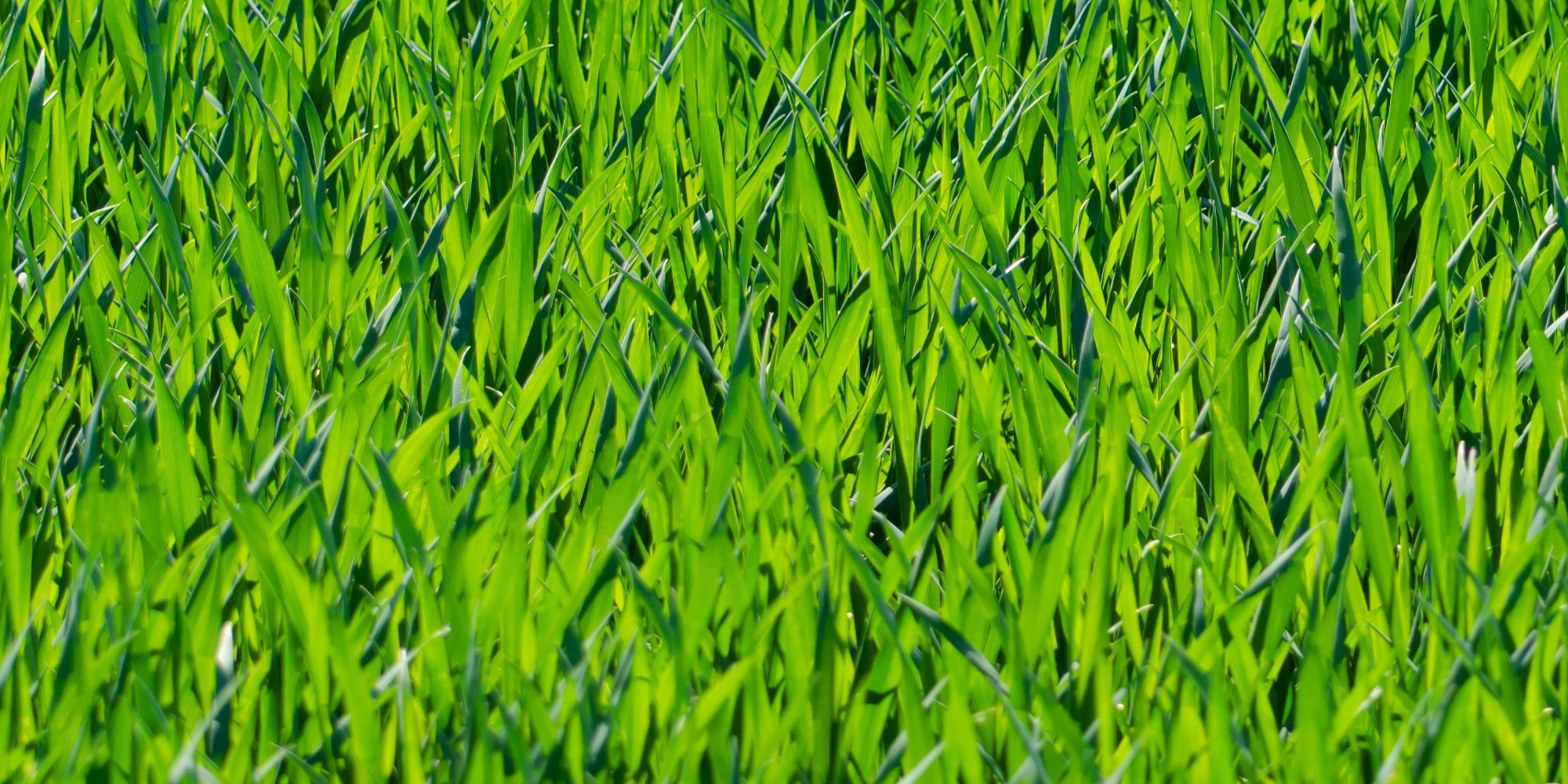There are lots of types of grass out there. Not all are suited for lawns so how do you really pick the mix you want?
How do you pick the best grass seed for your lawn? That's a tough question and an even harder one to answer. Lately, the marketing monster has been pushing one brand of grass seed mix or another. It can sometimes give us the wrong impression of grasses and grass mixes. Let's just take a few points as examples.
The first is Kentucky Blue Grass. This is a really nice grass for lawns but it really need full sun. It's a nice deep green colour and stands up quite well. Most sod you can purchase is Kentucky Blue Grass. Sometimes you can get pure Kentucky Blue Grass seeds, though this is typically used only for overseeding or very specific uses. There's one really interesting aspect to Kentucky Blue that often annoys people. As a survival mechanism, Kentucky Blue will go into a dormant state in hot and dry weather. By doing this, the plant conserves moisture but becomes an awful brown dead-looking colour. If Kentucky Blue is watered regularly, it will not brown out, but it does need quite a bit of water. Of course, it will green up and grow again once the weather cools off a little and moisture is more readily available.
Fescues are great grasses for tough places. Not all fescues are all that attractive so a pure fescue mix can often look rather odd as a lawn. It does have deep roots for drought tolerance and also takes foot traffic very well. It's a great grass for places no other grass will grow like on sand dunes or old abandoned quarries. It's also nice on steep slopes or areas were erosion control is a major consideration.
Annual grasses have been given a bad name for some time. In a grass seed mix, there are typically both perennial grasses and annual grasses in the mix. There has been a misconception that it's bad to have annual grasses in the mix because they would only die off after the winter "wasting" money. However, these annual grasses serve a few important purposes. First, the germinate faster than perennial grasses so they provide important cover and shade for the perennial grasses to germinate. They provide colour to the lawn and fill out faster. The less bare ground, the less weeds germinate to it helps a little to hold back weed seeds. Finally, they help retain the soil longer and prevent erosion from happening before the perennial grasses take root.
Clover is sometimes added to grass mixes. This may seem rather odd, but it is typically only added in mixes designed for heavy traffic. Clover comes up quite quickly and is a very tough plant so it has an important use in these mixes, even at rates of 10% or less.
My suggestion when getting grass seed is based on faith. You need to trust your grass seed so get a good mix. Choose a mix with a name that most suits your needs - Super Shade for the shade, Park & Play for high traffic areas, Hardi-Lawn for tough areas, Estate Lawn for the ultimate sun, or any number of other mixes. Darwin's theory holds true with grass seed mixes - whatever grass holds the best in the conditions they are placed will eventually take over and grow to be the best lawn. Don't be afraid of annual grasses and don't get hung up on the species and varieties of grasses in your mix. Reputable grass seed suppliers know their grasses and their mixes. It's like asking an accountant's advice on your taxes - they probably know what they're talking about.
When seeding grass, it's best to seed grass when there's an "R" in the month. You can still seed your lawn at other times, but you will need to water more to compensate for the drier conditions. Grass seed also needs covering to germinate. That can be loosening existing soil, or covering the grass seed with new soil. Often times putting down the grass seed and then giving it a good hard rake can be sufficient. For hard packed areas, a skiff of soil on top isn't a bad idea. There are some newer top-dress soil mixes that are lighter and easier to spread than traditional top-soil so that may be worth investing in. Remember, seeds only need to be covered with soil the thickness of the seed itself so that means you really only need a couple millimeters of cover, not a few inches. Lastly, unless you're using a pure organic fertilizer or a plant start/transplant fertilizer, don't fertilizer within about a month of seeding. The high nutrient levels of most synthetic fertilizers can burn off newly germinating grass seed. Just avoid it.
I have one last caveat for grass seed. If you're a fan of Corn Gluten Meal (of which I am not), you may have a bit of a problem with your grass seed, especially if you've been a loyal user for a long time. Corn gluten builds up in the soil over the span of about four years. It often does stop weed seeds from germinating, but it also stops grass seed from germinating.

